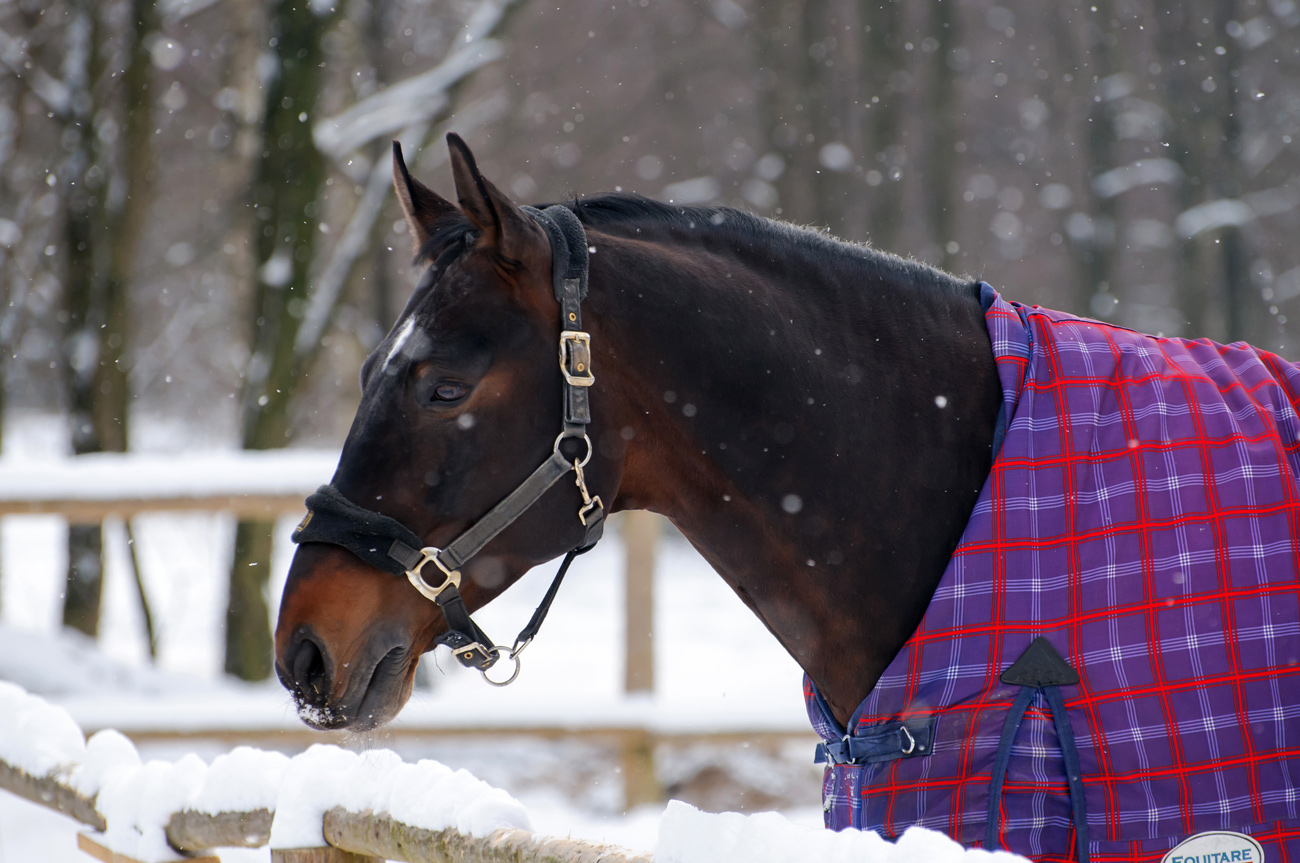As daylight grows shorter, temperatures drop, and fuzzy coats begin to make their appearance, horse owners know exactly what time it is. It’s time to pull out those winter blankets! Whether you are a new horse owner or a seasoned veteran, choosing whether or not to blanket, what weight to use, and whether to use a turnout blanket or stable blanket can be overwhelming. There are so many factors that go into deciding, such as whether your horse lives outside or goes into a cozy barn at night, their age, and more! We are here to break all of that down for you!
To blanket or not to blanket?
As we mentioned, many different factors go into choosing when to start blanketing and what weight to use! You need to understand that all horses will feel cold weather differently. Meaning, a show horse that is body clipped and spends most of the time in a stall will definitely feel the cold more than a horse that has a fuzzy winter coat and lives outdoors. Another thing to consider is age and weight. Typically, older horses, especially our seniors that have trouble keeping weight on, will definitely need a blanket before your chunky youngster!
Fill and Denier
The first thing to think about is what fill and denier you want to use. For those that do not know what those terms are; fill refers to the amount of stuffing in the blanket which manufacturers measure in grams. For example, your typical rain sheet has no fill or 0g. Medium weight blankets range from 150-225g and heavyweight blankets range from 250-370g. Anything over that is considered an ultra or mega heavyweight. Denier refers to the strength or density of the nylon fabric. This tells you how durable and water-resistant the blanket is and varies blanket-to-blanket. The most common Denier you will see is 600D to 1200D; the higher the number, the more dense the fiber and the more durable the blanket. Something to keep an eye out for is that some blankets are waterproof and breathable, while some are not.
What Blanket Should Be Used and When?
We recommend using a waterproof turnout sheet with no insulation when the temperature is between 50°F – 65°F. This will help to protect them from the wind and rain during poor conditions keeping them warm and dry! A lightweight blanket can be used when temperatures are between 40°F – 60°F if your horse is clipped, or 30°F – 50°F if they have a full coat. Medium weight is a good choice when the temps are between 35°F – 50°F for a clipped horse or 30°F – 45°F with a full coat. Heavyweight blankets are recommended when temperatures drop below 20°F – 40°F when clipped, or 15°F – 30°F with a full coat.
Something to remember is that over-blanketing is a thing, and can be very dangerous for your horse. Doing so can cause overheating and heat stress, so we suggest choosing to blanket with less fill rather than more if you’re unsure. It’s best for your horse to feel a little chill than to have them sweaty, wet, and hot. Blanketing is something to be taken seriously, so as a horse owner, it is your responsibility to educate yourself. There is no one-blanket-fits-all, so do your research and help your horse stay warm and dry this winter!
